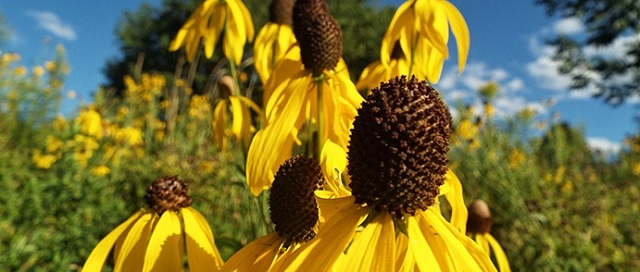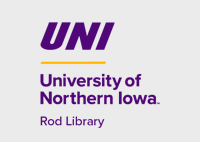
K-12 Curriculum Supplements
K-12 curriculum supplements written by individuals associated with the University of Northern Iowa.
-

CRISTAL (Chemistry Resources and Instructional Strategies for Teaching All Learners for MS & HS Chemistry)
Jody Stone
The CRISTAL program was developed for the purpose of (1) increasing the number of quality laboratory experiences carried out in high school chemistry classes (2) providing learning activities designed to stimulate the development of reasoning/problem-solving skills and (3) providing chemistry teachers with ideas and strategies for creating a more student-centered classroom. The intended audience is all students enrolled in high school chemistry, especially those students needing additional motivation for learning chemistry.
The CRISTAL materials include a teacher's resource manual containing over 100 activities. These laboratories are arranged in a learning cycle format involving exploratory and application activities. One or more learning cycles are included on each major concept typically covered in high school chemistry. The learning cycle activities include high interest activities involving everyday experiences and/or interesting problems which students are challenged to solve. The guide supports the teacher in developing a chemistry curriculum which is compatible with any chemistry text. The teacher identifies the concepts to be taught, then uses the guide to select appropriate learning cycle activities to use to help teach those concepts. The guide contains student activity sheets which may be reproduced, as well as teacher notes with suggested teaching strategies on how to implement each CRISTAL activity, sample data, and answers to student questions.
-

GEOMES (Geoscience Educational Opportunities for Motivating Every Student)
Jody Stone
The intent of the GEOMES materials is to provide earth science teachers with resources and strategies that will generate interest and enthusiasm among students and teachers for the study of earth science. So there you have it—Geoscience Educational Opportunities for Motivating Every Student (GEOMES). The study of earth science should provide individuals with understandings that prepare them to make more intelligent decisions on processing issues. It should provide students with insights that make the interpretation of events in their environment more meaningful.
The format of the teaching strategies employed in the GEOMES program is designed to attract the student's interest in a phenomena, have the student learn a basic relationship and then apply these relationships in new situations. This strategy is a model used to help develop reasoning skills in our students. Concrete learners need introductory experiences such that they experience mental encounters that challenge them to do their own reasoning to find patterns. Teacher lectures and discussions without appropriate student involvement often stimulate only memorization. The activities in this guide provide thought-provoking activities organized around the topics typically covered in high school earth science. However, the teacher should feel free to add other learning experiences or alter these to fit the interests and needs of the local students. However, we strongly recommend adhering to the learning cycle format of exploratory activities, concept development and application experiences.
-

PROBE (Problem-based Learning Activities for K-12 Science)
Jody Stone
This book, PROBE: Problem-Based Learning Activities for K-12 Science, is a K-12 curriculum supplement developed by the Jody Stone at the Malcom Price Laboratory School to teach problem-based science learning.
PROBE covers the following areas: Chemistry, Earth Science, Environmental Science, Health Science, Inquiry, Life Science, Literacy, Math, Physical Science, and Physics. The materials were developed for different grades ranging from PreK to 12th grade.
-

America's Lost Landscape: The Tallgrass Prairie Activity Guide
University of Northern Iowa. Tallgrass Prairie Center.
This book is a K-12 curriculum supplement developed by the Tallgrass Prairie Center at the University of Northern Iowa to accompany the film, America's Lost Landscape. The activity guide was used in the educators' workshop held at the University of of Northern Iowa in fall 2007.
-

An Iowa Supplement to the Project WET Curriculum and Activity Guide
Marcene Seavey and Betsy Fitzgerald
An Iowa Supplement to the Project WET Curriculum and Activity Guide is a K-12 curriculum supplement that was written as part of the Iowa Project WET program under the Iowa Academy of Science
-

BIOMES (Biology Instructional Opportunities for Motivating Every Student)
Jody Stone and Lyn Countryman
The intent of the BIOMES materials is to provide biology teachers with resources and strategies that will generate interest and enthusiasm among students and teachers for the study of biology. So there you have it—Biology Instructional Opportunities for Motivating Every Student (BIOMES). The study of biology should provide individuals with understandings that prepare them to make more intelligent decisions on processing issues. It should provide students with insights that make the interpretation of events in their environment more meaningful.
The format of the teaching strategies employed in the BIOMES program is designed to attract the student's interest in a phenomena, have the student learn a basic relationship and then apply these relationships in new situations. This strategy is a model used to help develop reasoning skills in our students. Concrete learners need introductory experiences such that they experience mental encounters that challenge them to do their own reasoning to find patterns. Teacher lectures and discussions without appropriate student involvement often stimulate only memorization. The activities in this guide provide thought-provoking activities organized around the topics typically covered in high school biology. However, the teacher should feel free to add other learning experiences or alter these to fit the interests and needs of the local students. However, we strongly recommend adhering to the learning cycle format of exploratory activities, concept development and application experiences.
-

Outlook on Groundwater: Elementary
Nancy Lockett and Patricia Mead
Table of Contents:
--- Forward
--- Activity 1: Life on Planet X
--- Activity 2: Dew Drop Inn
--- Activity 3: Water Magic
--- Activity 4: Drip Trip
--- Activity 5: Checking in at Aquifer Acres
--- Activity 6: Percolation Race
--- Activity 7: Checking Out of Aquifer Acres
--- Activity 8: What Goes Down, Comes Up!
--- Activity 9: Inspect That Drop
--- Activity 10: Old McDump's Farm
--- Activity 11: Pumps and Pipes
--- Activity 12: Who Dumped It?
--- Dilemmas
--- Glossary -

Outlook on Groundwater: Middle School / Junior High
Heidi Andre and Roger Beane
Table of Contents:
--- Forward
--- Activity 1: What Goes Up Must Come Down . . . And Around (Water Cycle)
--- Activity 2: Where Has All the Water Gone? (Percolation)
--- Activity 3: Out Of Sight, Out Of Mind (Groundwater)
--- Activity 4: Biting The Hand That Feeds Us (Consumer Groundwater Use)
--- Activity 5: You Can't Fool Mother Nature (Pesticide Contamination)
--- Activity 6: Nitrate Nightmare (Nitrate Contamination)
--- Activity 7: Culprits In The Cupboard (Landfill Contamination)
--- Activity 8: Rub-A-Dub-Dub (Water Budgeting)
--- Activity 9: Here Comes The Judge (Groundwater Laws)
--- Activity 10: Energy Savings (Conservation Farming)
--- Activity 11: All's Well . . . That Ends Well (Community Awareness)
--- Activity 12: Drowning in Laughter (Editorial Cartoons)
--- Glossary
--- Appendix -

Outlook on Groundwater: Senior High
Bernard Hermanson and Joyce Meyers
Table of Contents:
--- Forward
--- Activity 1: Beam Me Up, Soddy
--- Activity 2: The Quiet Pump
--- Activity 3: Buried Treasurer
--- Activity 4: Personally Perceived Million
--- Activity 5: (kon-tam-i-na'-shon)
--- Activity 6: Home - A Hazardous Waste Site?
--- Activity 7: D. B. Smirch (or Clean Up Your Aquifer)
--- Activity 8: It All Comes Out With the Wash
--- Activity 9: It's A Dirty Strain
--- Activity 10: Rate Your Water
--- Activity 11: Contamination Rummy
--- Activity 12: Whodunit?
--- Activity 13: Old Home Place (Modern Pioneers)
--- Activity 14: Agricultural Energy Management
--- Activity 15: Public Puzzle
--- Glossary
--- Appendix


